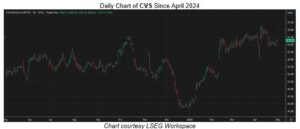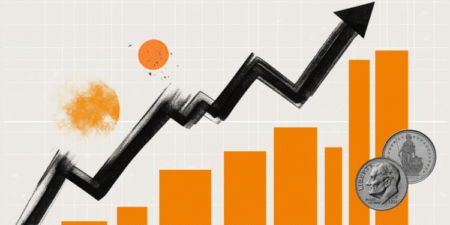- The US Dollar trades marginally higher against most major currencies.
- President Trump lashed out at Fed’s Powell again during a rally in Detroit.
- The US Dollar Index is capped below the 100.00 round level ahead of key US data.
The US Dollar Index (DXY), which tracks the performance of the US Dollar (USD) against six major currencies, edges slightly higher and trades at 99.40 at the time of writing on Wednesday. The Greenback is not really going anywhere as investors stay on the sidelines against key data releases during the American session. United States (US) President Donald Trump signed an executive order to ease the tariff impact on car parts and, during a rally in Detroit, lashed out at Federal Reserve Chairman Jerome Powell again, proclaiming Trump knows more about interest rates than Powell does.
On the economic calendar front, a general rehearsal will take place this Wednesday ahead of the Nonfarm Payrolls release on Friday. The US Gross Domestic Product (GDP) preliminary reading for Q1 will already be a vital element to assess the first impact, if any, of the administration’s tariff policy. The reading could stoke recession fears in case it shows weak growth or even contraction, while it could fire up stock markets if the initial impact of tariffs and Trump’s presidency on growth proves to be rather limited.
Daily digest market movers: Calm before the storm, part 1
- At 12:30 GMT, the preliminary reading of the first quarter for US Gross Domestic Product is to be released. Economists expect the US economy to have grown by a modest annualized rate of 0.4%, much slower than the 2.4% expansion seen in 2024’s fourth quarter.
- In that same time span, the monthly PCE data for March will also be released. The Monthly Core PCE is expected to come in at 0.1%, down from 0.4%. The monthly headline number is expected to fall to 0%, from 0.3% previously.
- Around 13:35 GMT, the Chicago Purchasing Manager’s Index for April is due. Expectations are for a further contraction to 45.5 from 47.6.
- Equities are rather mixed, with overall losses to be reported. In the US, all futures are already pointing to red openings. After the US closing bell, Microsoft (MSFT) and Alphabet (GOOG) will report earnings.
- The CME FedWatch tool shows the chance of an interest rate cut by the Federal Reserve in the May’s meeting stands at 7.6% against a 92.4% probability of no change. The June meeting sees a 65.1% chance of a rate cut.
- The US 10-year yields trade around 4.15%, ticking lower for a second day in a row, with traders slowly but surely buying back into US bonds as rate cut bets are starting to pick up.
US Dollar Index Technical Analysis: Steady for now
The US Dollar Index (DXY) is starting to pick up from its low levels of 2025. Bulls are slowly starting to take back control of the chart. However, risk elements persist with the uncertainty and possible further deterioration of US data likely to cause the DXY to edge substantially lower.
On the upside, the DXY’s first resistance comes in at 100.22, which supported the DXY back in September 2024, with a break back above the 100.00 round level as a bullish signal. A firm recovery would be a return to 101.90, which acted as a pivotal level throughout December 2023 and again as a base for the inverted head-and-shoulders (H&S) formation during the summer of 2024.
On the other hand, the 97.73 support could quickly be tested on any substantial bearish headline. Further below, a relatively thin technical support comes in at 96.94 before looking at the lower levels of this new price range. These would be at 95.25 and 94.56, meaning fresh lows not seen since 2022.
US Dollar Index: Daily Chart
US Dollar FAQs
The US Dollar (USD) is the official currency of the United States of America, and the ‘de facto’ currency of a significant number of other countries where it is found in circulation alongside local notes. It is the most heavily traded currency in the world, accounting for over 88% of all global foreign exchange turnover, or an average of $6.6 trillion in transactions per day, according to data from 2022.
Following the second world war, the USD took over from the British Pound as the world’s reserve currency. For most of its history, the US Dollar was backed by Gold, until the Bretton Woods Agreement in 1971 when the Gold Standard went away.
The most important single factor impacting on the value of the US Dollar is monetary policy, which is shaped by the Federal Reserve (Fed). The Fed has two mandates: to achieve price stability (control inflation) and foster full employment. Its primary tool to achieve these two goals is by adjusting interest rates.
When prices are rising too quickly and inflation is above the Fed’s 2% target, the Fed will raise rates, which helps the USD value. When inflation falls below 2% or the Unemployment Rate is too high, the Fed may lower interest rates, which weighs on the Greenback.
In extreme situations, the Federal Reserve can also print more Dollars and enact quantitative easing (QE). QE is the process by which the Fed substantially increases the flow of credit in a stuck financial system.
It is a non-standard policy measure used when credit has dried up because banks will not lend to each other (out of the fear of counterparty default). It is a last resort when simply lowering interest rates is unlikely to achieve the necessary result. It was the Fed’s weapon of choice to combat the credit crunch that occurred during the Great Financial Crisis in 2008. It involves the Fed printing more Dollars and using them to buy US government bonds predominantly from financial institutions. QE usually leads to a weaker US Dollar.
Quantitative tightening (QT) is the reverse process whereby the Federal Reserve stops buying bonds from financial institutions and does not reinvest the principal from the bonds it holds maturing in new purchases. It is usually positive for the US Dollar.
Read the full article here
















